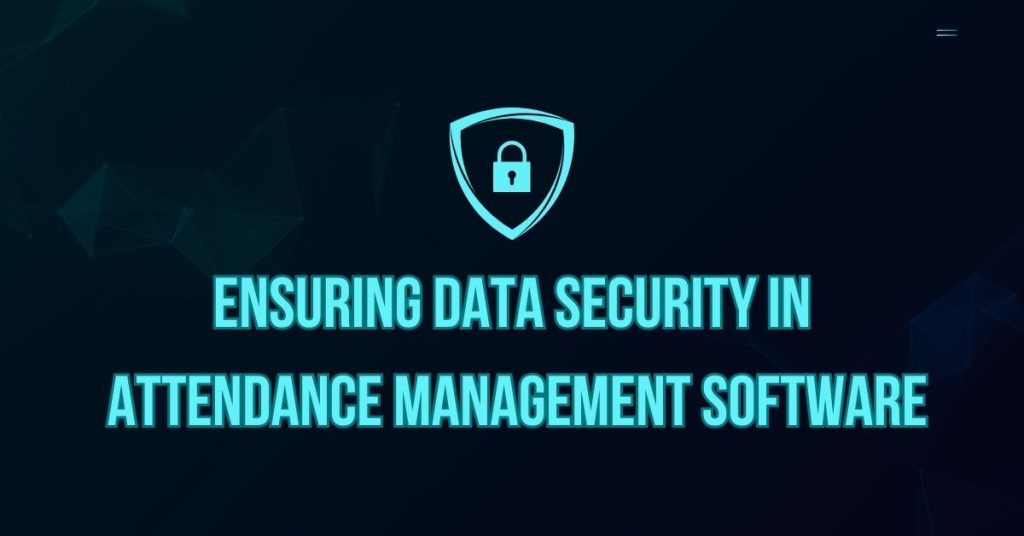Ensuring Data Security in Attendance Management Software
3 min read
In today’s digital age, businesses rely heavily on attendance management software to streamline operations, enhance productivity, and ensure compliance. However, with the increasing amount of sensitive employee data being stored and processed within these systems, data security becomes a paramount concern. Ensuring the protection of this data is crucial to maintaining trust with employees and safeguarding against potential breaches. In this article, we explore the importance of data security in attendance management software and strategies for effectively safeguarding sensitive information.
Understanding Data Security Challenges:
Attendance management software collects and stores a wealth of sensitive data, including personal information, attendance records, and biometric data. This data is susceptible to various security threats, including unauthorized access, data breaches, and identity theft. Moreover, regulatory requirements, such as GDPR and CCPA, impose strict guidelines for data protection, adding an additional layer of complexity to compliance efforts.
Key Components of Data Security:
Data security in attendance management software encompasses several key components, including encryption, access controls, authentication mechanisms, and regular security audits. Encryption ensures that data is protected both in transit and at rest, making it unreadable to unauthorized parties. Access controls restrict access to sensitive information based on user roles and permissions, reducing the risk of unauthorized access. Authentication mechanisms, such as multi-factor authentication, verify the identity of users, further enhancing security. Regular security audits and vulnerability assessments help identify and address potential security weaknesses before they can be exploited.
Implementing Best Practices:
Implementing best practices is essential for ensuring robust data security in attendance management software. This includes conducting thorough risk assessments to identify potential vulnerabilities and implementing appropriate security measures to mitigate risks. Additionally, organizations should establish clear policies and procedures for data handling, access control, and incident response. Regular employee training and awareness programs help educate staff on security best practices and minimize the risk of human error.
Choosing a Secure Solution:
When selecting an attendance application, organizations should prioritize security features and capabilities. Look for solutions that offer strong encryption protocols, secure authentication mechanisms, and compliance with relevant data protection regulations. Additionally, consider the vendor’s track record in security, including their commitment to regular updates, patches, and security audits. Conduct thorough due diligence to ensure that the chosen solution meets the organization’s security requirements and provides adequate protection for sensitive data.
Monitoring and Response:
Continuous monitoring and proactive response are essential for detecting and responding to security incidents in a timely manner. Implement real-time monitoring tools to detect unauthorized access attempts, unusual behavior, and potential security breaches. Establish incident response procedures to guide the organization’s response to security incidents, including containment, investigation, and remediation efforts. Regularly review security logs and conduct post-incident analysis to identify lessons learned and improve security posture.
Staying Compliant:
Compliance with data protection regulations is a critical aspect of data security in attendance management software. Ensure that the chosen solution complies with relevant regulations, such as GDPR, HIPAA, and CCPA, and that appropriate safeguards are in place to protect sensitive data. Regularly review and update data privacy policies and procedures to reflect changes in regulatory requirements and industry best practices.
In conclusion, data security is of paramount importance in the attendance system. By understanding the challenges, implementing best practices, choosing a secure solution, monitoring and responding to security incidents, and staying compliant with relevant regulations, organizations can effectively safeguard sensitive employee data and maintain trust with their workforce. Investing in robust data security measures not only protects against potential breaches but also demonstrates a commitment to protecting employee privacy and maintaining the integrity of the organization’s data assets.




